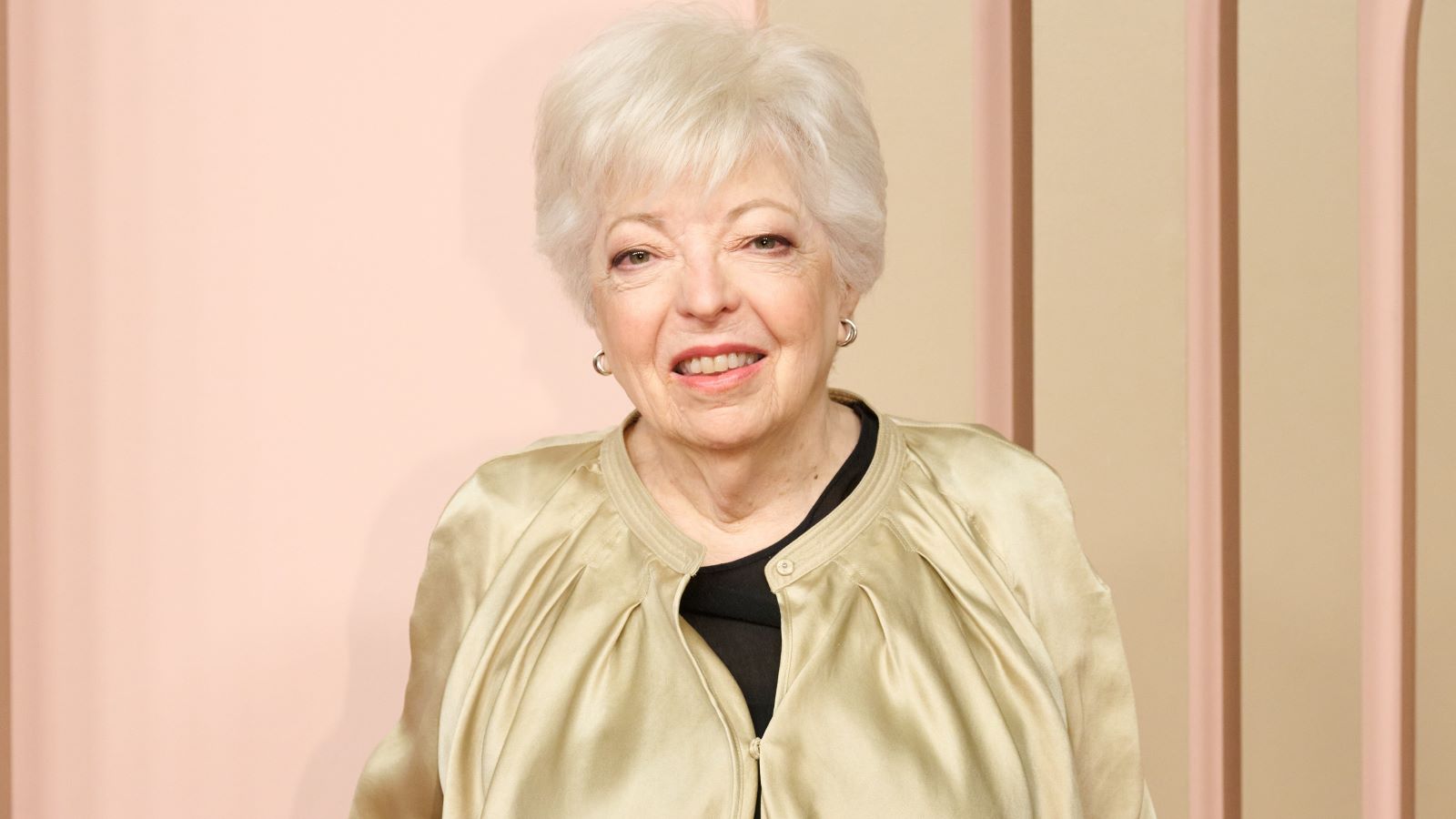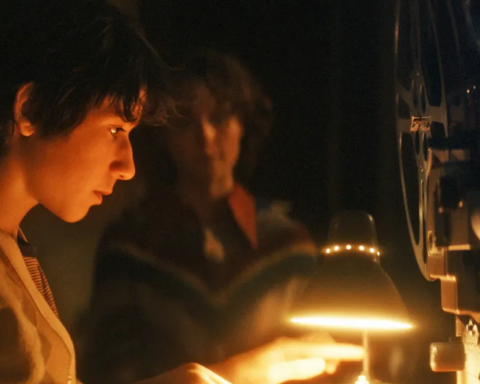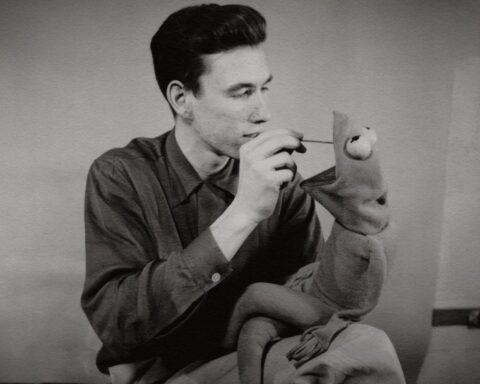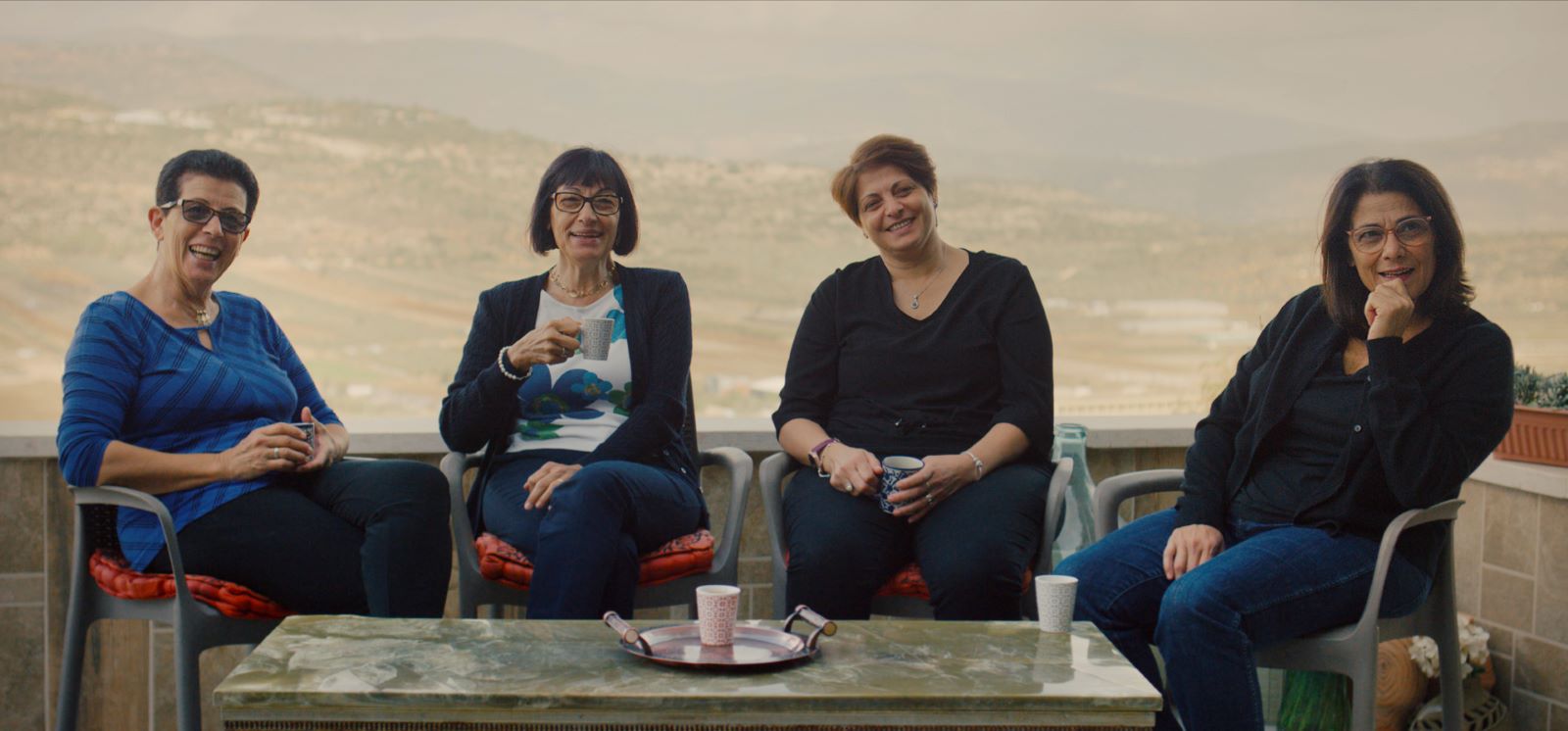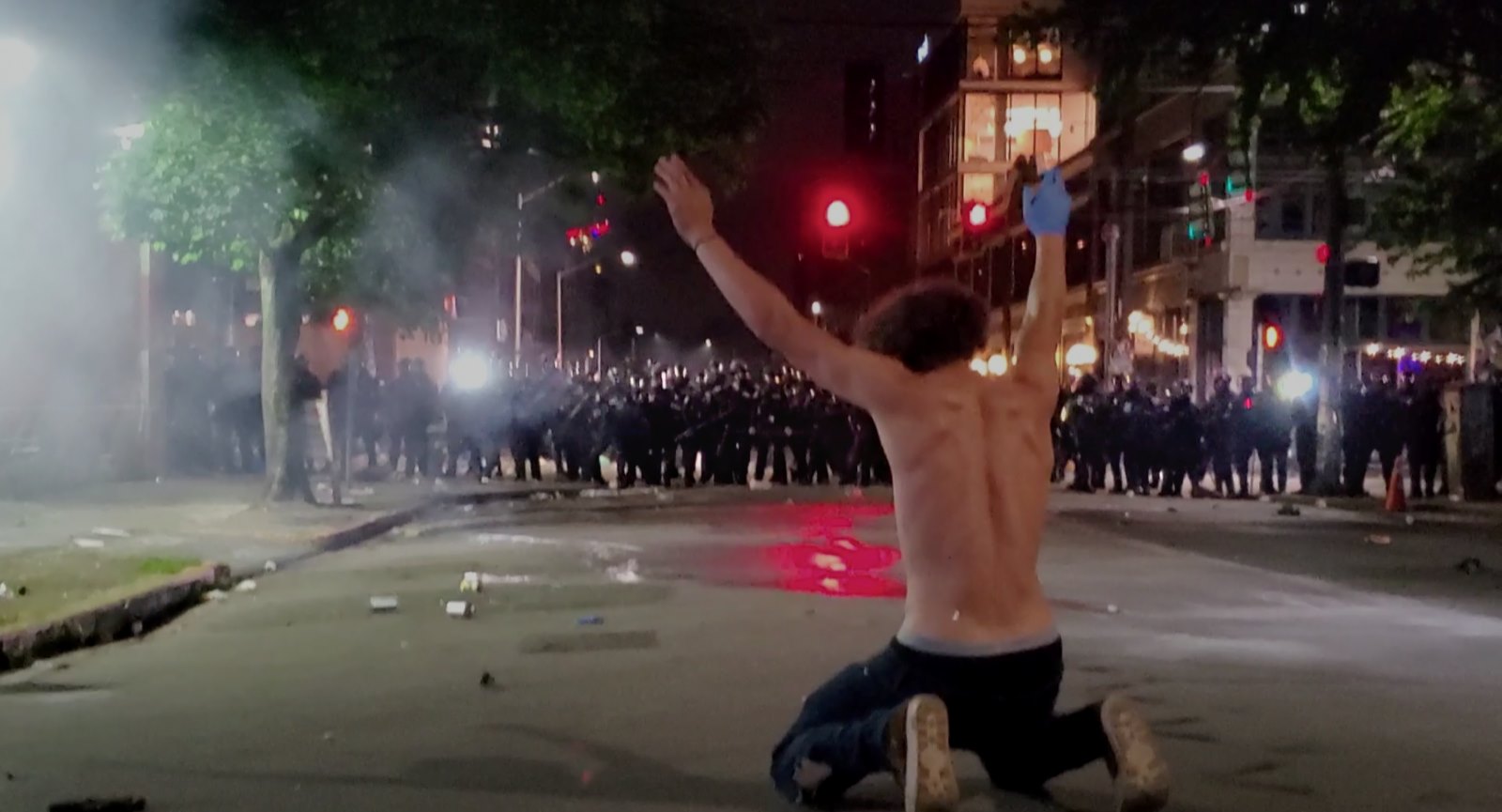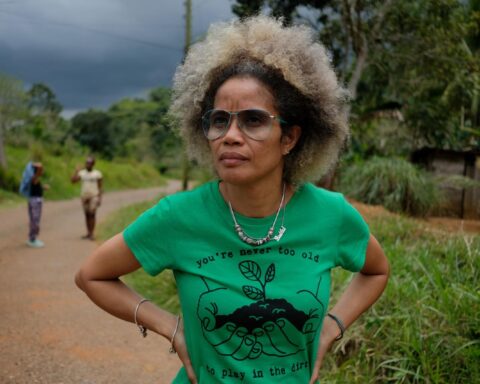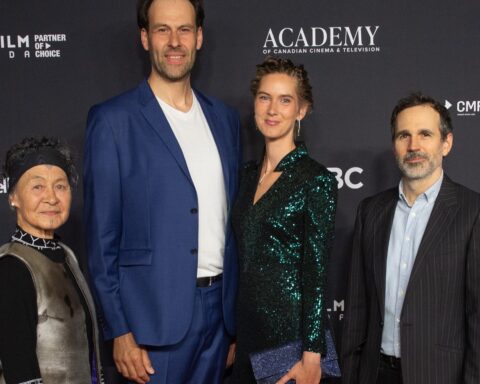When discussing the films of Martin Scorsese, it’s easy to marvel at his collaborations with a core team over the years. Actors such as Robert De Niro and Leonardo DiCaprio have become almost synonymous with the auteur’s work. However, one voice has been with “Marty,” as he’s known to many colleagues, since the very beginning of his career, and is as critical a collaborator as any for making masterpieces like Casino, Raging Bull, The Last Temptation of Christ, and, most recently, the Oscar-nominated Killers of the Flower Moon.
Sitting down to chat with three-time Oscar-winning film editor Thelma Schoonmaker would be a thrill for any student of cinema, but she did her utmost to deflect from her own role in crafting some of the most extraordinary films of all time. Schoonmaker was in Toronto recently at Hot Docs to present the documentary Made in England: The Films of Powell and Pressburger, which she executive produced. It’s a celebration of the films of her late husband, Michael Powell, who had a great influence on Scorsese. Like A Personal Journey and A Voyage to Italy (two of Scorsese’s documentaries that Schoonmaker edited), director David Hinton lets Scorsese articulate his adoration for the films of Michael Powell and Emeric Pressburger, like The Red Shoes and Black Narcissus, in his relaxed and personable yet fiercely intelligent style.

POV spoke to Schoonmaker about her early work on the iconic documentary Woodstock, and while wrapping, she talked of sleepless nights, nits plaguing her hair, having to confront the pioneering concert lighting master/baritone-voiced emcee to give the cameras more light, and Scorsese bringing along cufflinks in case they had a fancy dinner to go to. We talked of her implausible connection with her collaborator, and how they reconnected after almost a decade apart after his move to Hollywood. We also discussed how technology has changed the way she works and, above all, we talked about her love, both aesthetically and romantically, with one of the icons of British cinema.
Scorsese’s journey through the filmography of Powell/Pressburger mirrors Schoonmaker’s own, and as she relates below, so much of her appreciation for film comes directly from his enthusiasm and voracious cinephilia. One needs no excuse to simply bathe in Scorsese’s adoration of the medium and the movies that made him who he is, but it was this conversation with Schoonmaker that provided a relatively rare opportunity to put the spotlight on her own journey, how these films spoke to her well before Marty made his mark, and how together they continue in their sixth decade of collaboration to be mindful of the lessons that these British masters laid down for them.
We spoke to Schoonmaker at the Hot Docs office in Toronto prior to Made in England’s premiere at the festival.

POV: Jason Gorber
TS: Thelma Schoonmaker
The following has been edited for brevity and clarity.
POV: Tell me about the first time you ever saw a Powell and Pressburger film.
TS: There was this wonderful program on TV called The Million Dollar Movie. It would play the same movie nine times in one week. Scorsese started seeing the films that way because American distributors would not give their films to TV at that time, but the British were desperate, and they would. That’s how Marty became addicted to these movies.
POV: That’s how he became addicted. How did you become addicted?
TS: I’m going to tell you! He would watch, if he could, all nine times, until his mother would say, “If you watch that one more time, I’m going to kill you,” because he was so young.
I moved from living abroad. My father worked for an oil company. I was born in Algeria, moved out right away a year later because the allies invaded North Africa to get Rommel, the famous German general. We were evacuated and went to Aruba where there was another oil facility. When I came back to the United States at the age of 15, it was a very strange country to me. I was used to living with people from all over the world and so this program was on, this Million Dollar Movie. I didn’t know Marty was also looking at it, I didn’t know him then. My mother didn’t want us watching – she was a nursery schoolteacher, and when she came home at night, at four or five, she would put her hand on the TV to see if it was warm. I snuck a showing in this one time and I saw The Life and Death of Colonel Blimp. And I never forgot it. It was just an incredible influence on me. I didn’t know that many many years later, not only would I meet Marty, but I would meet the man who made it.
POV: You wouldn’t only meet him, you’d marry him.
TS: Exactly!
POV: You’ve spoken about how Powell’s films are among your favourites. What’s it like to meet your heroes? How does one divorce the man from the myth? How does one divorce the creative force that made those films from a person that you’re going to spend the rest of his life with?
TS: Well, I don’t. I never do. I mean, with Marty, I don’t divorce him, his personal thing, from his work. Or Bob De Niro. I don’t divorce them.
POV: How are you not star struck?
TS: With Michael, it wasn’t such a matter of being star struck because he was being brought out of oblivion by Marty. Michael couldn’t afford to heat his house. He couldn’t buy a bottle of whiskey for two years. I was meeting someone who Marty was educating me about, sending me home with DVDs all the time. That that was just a joy.
I loved the films so much, and it was such a joy to meet the man who made them. But it wasn’t being star struck. Actually, I don’t think I’ve ever really been star struck because I’ve worked so long in the film industry. I love meeting people that I admire so highly, but it’s not in a star struck way. It’s [as] in a deep appreciation of, “How the hell do they do this?” I mean, how does De Niro do it? I will never understand how he does it. He’s so brilliant.
We have a wonderful community of great filmmakers and actors and I’m lucky to be part of it. It was wonderful when Michael came and started living with me in New York and he was there when we made King of Comedy. It was wonderful for him to be back in that world.
Michael was writing his autobiography, so that’s what he did during the day when I was editing, but he was often on the set with Marty, as you see in the documentary. Michael gave us the ending for After Hours, for example. Everybody was saying we didn’t really have an ending, and people were saying, “He should get in a balloon and fly off!” Michael argued Paul Hackett has to go back to hell where he began. Marty agreed, and that’s how we did it. Michael was also responsible for shooting Raging Bull in black and white, but I’m sure you’ve heard that story.
POV: I won’t mind hearing it again, I promise.
TS: When Marty started bringing Michael to New York, he introduced him to Bob [De Niro]. Bob was a huge fan of the movies, particularly Blimp, and he kept saying to Michael, “How did Roger Livesey do that?” How did he change the way he looks to three different personalities, and physical shapes? And Michael just said to him, “It was acting, Bob! It was acting.” Bob decided to gain the weight, and my husband said, “Don’t gain the weight, that’s not good for you.”
Earlier, when Michael was first tracked down, he asked to see one of Marty’s films. Marty decided to show him Mean Streets. Michael thought it was a masterpiece. When they were in New York later, they were going around New York. He wanted to see where Mean Streets had been shot. They stopped where Bob was training for Raging Bull in a gym. Marty was looking at the videos, and beginning to choreograph how he was going to shoot the fights, and Michael said there’s something wrong with the red gloves. And Marty said, you know, “You’re right, this should be black and white.” That’s the way I saw the films with my father on Kinescopes and theatres.
There were always things like that that were going on. At the end of Last Temptation of Christ, one of our later cuts, I finally talked Marty into letting Michael see it. Marty was so afraid he wouldn’t like it. At the time Marty was being bombarded, we had bodyguards—I mean, the Christian right was just being horrible. Michael stood up after the cut and tears were streaming down his face. It was such a great moment for Marty.
POV: When you watch films yourself, do you always watch with an editor’s eye, or can you separate the craft from the film itself?
TS: Yeah, I’m able to separate, particularly the movies I’m able to just go [see] in the theatre, such as the Oscar-nominated ones.

POV: A Personal Journey was another incredibly important film for me. I don’t love all the films that he presents, but I love how he loves them. Personally, I cannot watch a Powell and Pressburger film and not think about you and Marty. Because it’s your love of those films that I’m seeing when I watch those films.
TS: Oh, that’s interesting. So you don’t really respond to them.
POV: I respond to them because you have responded to them, and because I love the films you have made so much. I’m seeing those aspects of Raging Bull, those aspects of Age of Innocence. That’s why this documentary, for me, feels very much a continuation of Personal Journey.
TS: I think there are very few people who speak about film as well as Marty does. He really can articulate things brilliantly. And a lot of filmmakers can’t.
POV: What would be your personal journey films?
TS: I’d have to say they’re completely influenced by Marty. I don’t have time to see movies that much, but because I made two documentaries about the movies he loves, A Personal Journey and A Voyage to Italy, my taste has been shaped by him. I work so hard, I don’t have time to see my friends, I don’t have time to go to movies. The ones that I love and have seen are things that he has had me see, usually because there’s a direct connection to a film we’re making.
POV: Can you give me an example?
TS: Battleship Potemkin. Not the famous stairs scene, but the scene where the sailors are beginning to get fed up with eating maggot-ridden food. You see a shot and the sailor smashes the dish. For the opening fight in Gangs of New York, Marty said to me, “I want you to look at the way Eisenstein cut his film.” He said he’s not cutting the down stroke, he’s cutting the up stroke. He’s jamming strange jump cuts together.
POV: As Michael is to Marty, who was Michael’s Marty? Who do you think Michael Powell was completely obsessed about?
TS: He had an enormous knowledge of filmmaking as it was exploding when he was young. He was 16 or 18 when all of these great filmmakers [were] coming. The Nordic countries were very influential on him, of course, and the German movies because they were creating crane shots and they were just doing incredible things. His experience at the Victorine Studios with Rex Ingraham was huge.
He had many heroes, from the silent era particularly. He very much resented the loss of the silent era because he said you used to be able to take a film and send it to Japan, and you didn’t have to change the film at all. No titles, you just take the card out, you put Japanese cards in.
POV: When you are cutting, do you always cut with the sound on?
TS: Oh yes. David Lean didn’t, you know.
POV: What software are you cutting with?
TS: I’ve used Lightworks for many many years. It’s old, I love it. I’m one of the few people still using it. Mainly, it’s used now in England for commercials and videos and stuff. Not feature films.
POV: What was your transition like from cutting film to cutting on a computer?
TS: I was very rebellious. I hated it, and I didn’t want to do it. The studios were all saying, “Everybody has to switch now. I’m sorry, you have to switch.” So, while making Casino, this guy came to train me, and he’s been with me for 25 years ever since. I was just being terrible, I would say, oh, I could do this much easier on film, but, finally, after two weeks, I clicked in.
The thing is now that we still shoot on film. Film is the most important thing to have. It will last for 100 years, and digital will not. Most people don’t know digital is not stable and we’re going to lose tons of information unless people face up to that. You have to constantly keep transferring it to another medium or just another drive – It will die and we’re going to lose huge amounts of stuff.
Still, we can do amazing things that we could never do before. I can mix our soundtracks for our temporary cuts as we go along, because we do about 12 cuts, with my fellow editor who does the mixing and I’m directing it. I can have 24 tracks. I can even have 36 tracks in that machine. We could never do that before, even with flatbeds and Moviolas. We had two tracks, so we would spend a lot of money going to sound studios to do these temp mixes. We can turn the shot upside down, we can make it black and white, we can speed it up, slow it down—we can do so much.
POV: You can dissolve…
TS: We used to wait a week for the dissolve to come back. But we didn’t use many visual effects in those days. Our first visual effect was in Kundun, with the palace. The problem now with us shooting on film is that we would never be able to recreate the visual effects. It would be too expensive a hundred years from now. Who knows? Maybe with AI it won’t be! [Laughs.]
POV: Two of the most influential films that you’ve ever cut, Woodstock and Raging Bull, were both cut on flatbed.
TS: We couldn’t have done it without that, yeah. The big revolution was that we could have three picture heads, or, if you wanted to have two picture heads and four tracks, you could lift out the picture head and put in a module for tracks. You could even put a little 8mm camera in. It was a brilliant machine. Woodstock was cut entirely with multiple screens. It wouldn’t have been possible otherwise.
POV: Do you think those films would have been different if you had cut in a digital system?
TS: Maybe certain aspects of them: dissolves, and super impositions and split image. I don’t think on an ordinary film there was that much difference, but Woodstock was a particular case.
POV: If someone else made Woodstock today, they might go too far: because you have infinite choice, you get locked into the process of choice.
TS: The speed of cutting these days is so insane.
POV: Back then you had to lock things down before you’re making your split screens. You had to choose which shots they were before that, as opposed to now, you just put two windows up and if you want to change the shot, you change the shot. In some ways, people are concerned that by giving infinite choice, you’re given no real choice at all.
TS: When I’m in a taxi in New York and I see commercials, it’s very upsetting to me—I don’t like the speed of the cutting. These days, anything goes. I don’t think there’s enough decisions made about what an image is, and what the impact of an image is. You can see them sitting in the editing room and the producer and the director saying, “Oh, we’ll just shove this in, two frames.” Two frames? That’s not enough.
I even noticed when the Queen died. They were doing things like that with two frames of her, and I wanted to see her more. I think it’s just like a garbage can: you just throw everything in. As long as it’s moving, it has to be moving . . . no, it doesn’t! Great films are made without that kind of thinking. So it’s hard for me. I don’t have to do it, thankfully, but I don’t think they would know any other way right now: that it has to be moving, it has to be fast. What are the kids learning from this?
POV: When you are cutting a documentary, is it any fundamental difference for you from when you’re doing feature films?
TS: Oh, yeah. Usually, in a documentary, you are creating a script, in a way. You’re given tons of footage. It was hard to clip the great movies, because how do you take a great masterpiece and bring it down to 15 minutes or ten minutes? I’m given a mound of material and I had to find the story.
In the documentaries I made with Marty, it was important to maintain the looseness, the improvisational nature of it. Marty loves improvisation, and that was something I learned to deal with very early, to not be upset by the fact that something’s not fitting exactly right.
I love improvisation to this day. Take the scene in Raging Bull where Joe Pesci’s trying to talk his brother into fighting De Niro, and Bob is yelling at his wife. Marty couldn’t get two cameras in. Whenever he does improvisation, he almost always has two cameras, static. You can’t move because it would be too hard to edit. In this case, he could only get one camera in, so we had to do all of Joe on one side, and all of Bob on the other. It was very hard for me to make their wonderful, individual improvisations work. It was really hard, but I loved it! [Laughs.]
Marty loves accidents if they happen on the set. For example, when Bob said, “Are you talking to me?” in Taxi Driver: That was real. He asked Marty that question because something was going on, and they decided to build from that into that wonderful scene. It’s wonderful the way he’s open to accident and flexibility.
POV: Can you think of one time where you really wanted a shot to stay, and the director decided that they didn’t want it?
TS: Oh, no. He trained me. I wasn’t an editor when I met him.
Marty was at NYU, with Michael Wadleigh and Jim McBride. We were all working together, making films, sometimes for Merv Griffin. Somebody would go down and shoot John Wayne on the set of The Green Beret or something like that—they weren’t anything important. When we started coming up with this idea of Woodstock, he was always going to be co-directing it with Wadleigh because he knew more than anybody about music.
POV: Well, that’s not the way that it is credited. To this day, you have a higher credit than him.
TS: Well, that’s a different story. That’s a complicated story. I don’t want to talk about it.
POV: How did you become part of Marty’s world?
TS: I accidentally met him. I never intended to become a film editor. I wanted to become a diplomat because I loved living abroad and I missed it. I had a wonderful education at Cornell University. I studied Russian and political science. Sputnik had just gone up and everybody was, oh, “Russia, Russia!” I went to the State Department, passed all of the exams, but they gave me this stress test at the end to find out what I was like as a person, and they said, “If you’re in the South African embassy and somebody says to you, ‘What do you think about Apartheid?’ What would you say?” And I said I would say it’s terrible and it has to end. And they said well, you can’t do that as a diplomat, you have to wait until the government says it’s OK to say that. You’re way too idealistic.
We were protesting the Vietnam War, we were supporting Martin Luther King in the South, and so they said you’re going to be unhappy here. I got a job with a guy training the first Peace Corps group that went to Africa. Then I saw an ad in the New York Times that said, “Willing to train assistant film editor,” and I went and got that job. It was this horrible man butchering the films of Visconti, Truffaut, Fellini, taking a reel out of Rocco and His Brothers to make it fit a late night television slot. He was also a terrible drunk, and I just couldn’t take it after a while.
I then saw a little ad that said “Six week course at Washington College,” which then became NYU film school. I went down and I thought I could just afford six weeks. Marty was one of the people doing a student film. They put us together to make little 10-minute films, and I was on some dumb film about horse racing or something. At the end of it, the professor said, “Listen, there’s a man here whose film has been incorrectly cut in the negative by some poor student who didn’t know how to cut negative.”
Most filmmakers don’t know how to cut negative. I had learned enough from it butchering these movies. I knew how to scrape off the emulsion and put the cement on. I went over to Marty, and he had been up for three days. He was just zonked. I said, “Look, I’ll try and help you.” And I redid his movie. I made up for the shots that had been incorrectly cut. And that was the beginning.
Then we hooked up with Wadleigh and we started making documentaries. We all helped Marty finish his first movie, Who’s That Knocking?. We did that all for free, and it was great. That’s how I met him, and I think he just felt he could trust me with his films. There wouldn’t be ego battles, like there are a lot in editing rooms. He taught me on Who’s That Knocking?. He taught me as much editing as I knew at that point.
POV: After Who’s Knocking, what happened?
TS: What happened was he went to Hollywood, after Woodstock. He was not well received in Hollywood because he was too different. He wasn’t really happy there. I didn’t work on all of those movies. The first was Raging Bull.
I couldn’t work with him when he went out there. He wanted me to, but I wasn’t in the union out there. There was a union, a very weak one, in New York, and they were flexible. But not in Hollywood—they were really hard asses. They said you have to spend something like five years as an apprentice and seven as an assistant and then you can edit. I said, “Well, I was just nominated for an Oscar for Woodstock, so I’m not going to do that. I’m sorry.”
POV: And since then, you guys have collaborated on almost every film of his.
TS: Yeah, but not his documentaries anymore. I loved doing the documentaries, but there’s no time anymore, David Tedeschi has been doing the documentaries. Things like the Dylan doc No Direction Home.

POV: I mean this with total respect: in the same way that every time I watch a Powell and Pressburger film, I see Marty’s joy. With any film Marty makes, I see feel your editorial contribution.
TS: Well, you’d have to be in a room with us to really be sure about that, because we do everything together.
POV: But this is what I mean. I think that you guys are so entwined. You are so fundamental to his filmmaking.
TS: He trusts me to do what’s right for the film. And he knows that I understand his style. I love it, and I’m there to support him immensely. We do collaborate, more and more and more, but not in the beginning. In the beginning, it was him teaching me, particularly on things like Raging Bull. I mean, that was such an incredible editing thing to learn from. Oh my God, it was wonderful. So people give me way too much credit, really! But thank you. [Laughs.]
POV: I will give you all of the credit in the world.
TS: I think just the fact that we’re so close and share this great love of Michael is something that cements our relationship and it’s very special, but who knows how collaborations work? Who really knows how Michael and Emeric worked, you know? They’re mysterious. [Laughs.]
POV: I’ll ask the same thing I asked Scorsese at Cannes about Killers of the Flower Moon: Why are you still driven to go through the challenges of doing these films? You have three Oscars, you could sit on your laurels. What is still driving you to do this work this hard?
TS: The beauty, the wonder of the projects. Each one is so different, so fantastic, so challenging. Each one is a new challenge. The challenge here was because Leonardo DiCaprio and Marty had decided to go in a very different direction mid-stream, and some of those changes occurred as they were shooting. Those were made along with Lily Gladstone. Oh, the wonderful Lily! I still don’t know why she didn’t win the Oscar.
But, anyway, the three of them were working every weekend on rewriting and rewriting, so they were reshaping that. I wasn’t part of that because they wouldn’t let us go down to Oklahoma. Apple had a very good, excellent anti-COVID thing, and they wanted as few people there as possible. Marty and I were communicating on Zoom calls, and looking at the dailies together. I wasn’t there for this rewriting thing, but it was intense.
There were times during the editing when we could push it a little more, particularly when Leo comes over to the bed and Lily says “You’ve been away too much, and I don’t know if you love me anymore” and he tries to convince her he does, which he did. At the end, Leo improvised this wonderful line. She starts to make love to him and he says, “Oh, you want to wake the kids up, huh?” He starts laughing, that was a great moment. That was an improv, and it was a great way to end the scene. He and Lily were both instrumental in helping Marty reshape that relationship.
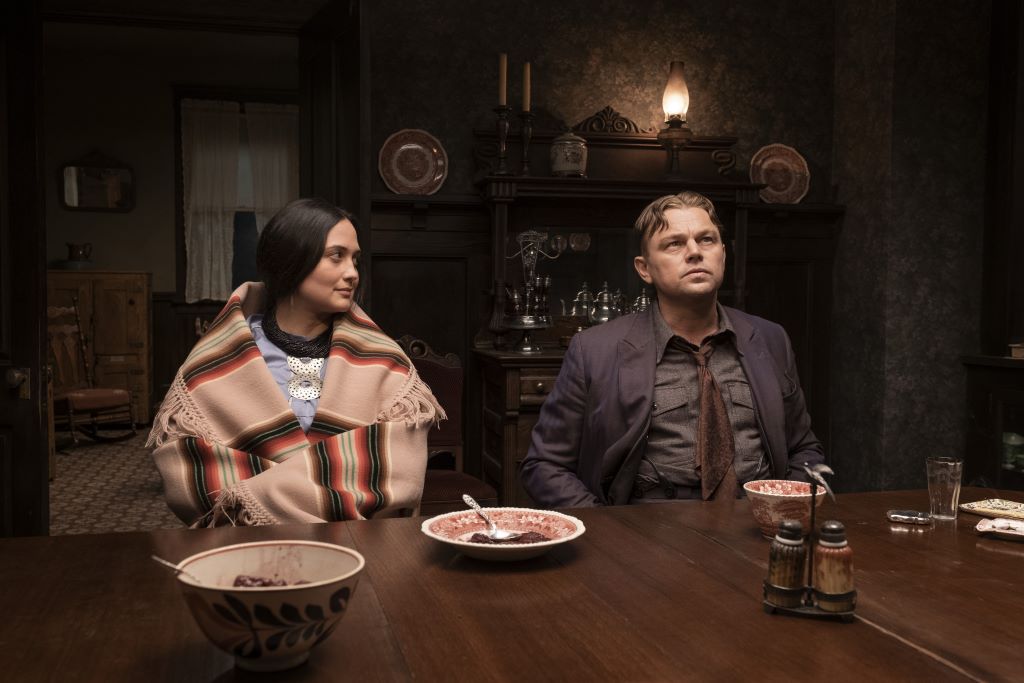
POV: For over a year, the only thing we had was a still of the two of them at the table. The joke was, when we were watching it at Cannes, that we would just stand up and applaud the moment when it happened because we finally got that scene. But what I love about it and what I love about the cutting of it is that the moment literally speaks to what you’re talking about. She says to him, “Just listen.” It is a still moment. You are not cutting back and forth, you are holding that shot.
TS: That’s what Marty wanted.
POV: You are holding that, and you are telling us as an audience: “Stop. And listen.” And that’s what Michael would do all the time. With these vignettes. Make us watch the shoes. Make us watch her eyes.
TS: Well, he, that’s the great thing that Marty and Michael agreed upon: to not tell your audience what to think. So many movies are that way, including some of these Oscar-nominated movies. They’re telling the audience what to think.
Marty took that particular thing from Michael, but I think he always felt that way. That’s why he responded to those movies when he was so young, because they weren’t telling him what to think. Powell and Pressburger films were making him engage. That is a big challenge for a director and an editor. It’s easier to tell the audience what to think.
At that moment, in Killers, Marty knew right away what to do. There was somebody on the set who told him that whenever there was a storm, his grandmother would say, “Stop playing with your brother. Come sit. We have to receive this.” So that’s why he did, it that way. He knew he was holding a bit longer than you’re supposed to. But that’s what he wanted to do. We tested that a bit, and that was what he wanted, that two-shot. Static. Quiet. Listen.




